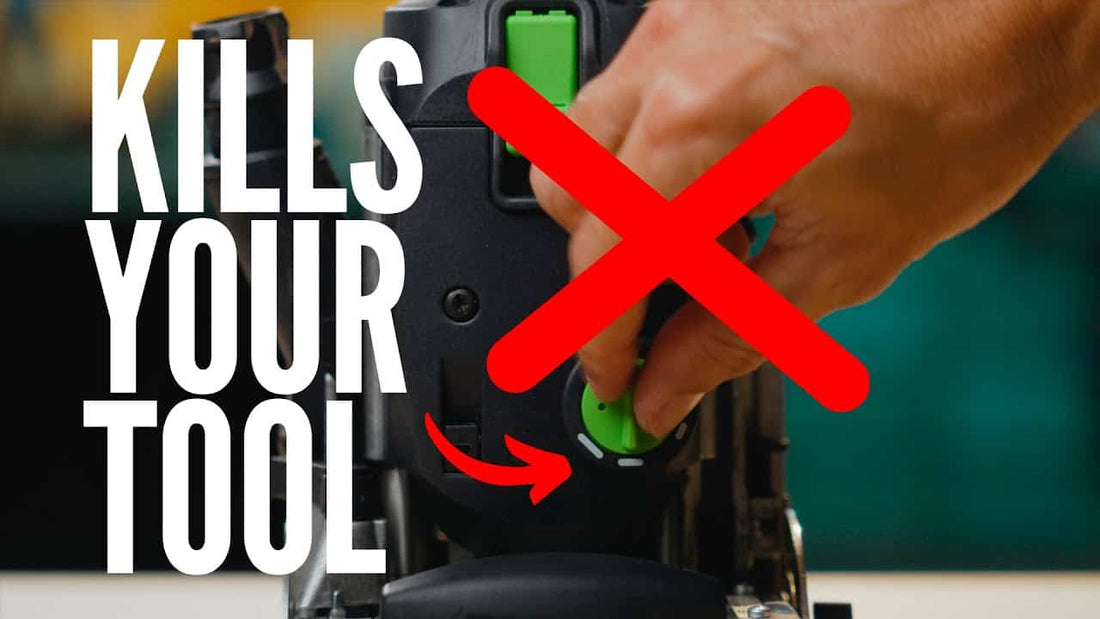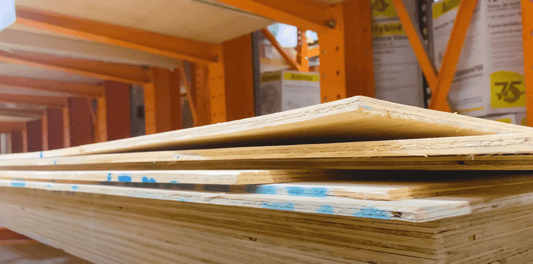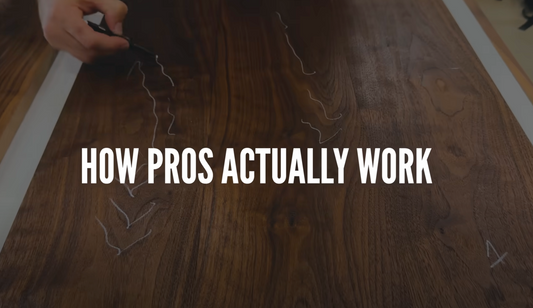
Domino For Dummies
Share
Watch The Video Here
If you’re new to woodworking or considering investing in a joinery tool, the Festool Domino might seem intimidating at first. In this guide, I’ll break down everything you need to know — from setup tips to common mistakes — so you can confidently master this powerful tool.
What Is the Festool Domino Joiner?
The Festool Domino is a precision joinery tool designed to cut mortises and insert strong, reusable tenons. It combines the strength of traditional mortise and tenon joints with the speed of modern power tools, making it popular among woodworkers and professionals alike.
Getting Started: How to Set Up Your Domino
At first, the many settings and metric measurements can feel overwhelming. Here are some key setup tips:
-
DON’T Adjust the Width While Motor Is Running: Never change the mortise width when the tool is off — this can damage the internal gears.
-
Use the Fence Angles: The Domino’s fence features positive stops at 45° and 90°, making angled and straight cuts easy.
-
Quick Depth Stop: Set the mortise depth accurately using the metric markings for quick adjustments.
- Reference Tabs: These are fixed 37 mm from the bit center, allowing you to start joinery without measuring or marking every time.
Choosing the Right Domino Tenons
The Domino tenons are made from durable European beech, offering more glue surface than dowels for stronger joints. Here’s what you should know:
-
Tenons come in many sizes — use the “rule of thirds”: the tenon should be about one-third the thickness of your board.
-
Tenons are intentionally slightly shorter than advertised to accommodate glue and allow some wiggle room.
- The ridges on tenons help excess glue escape, improving joint strength and ease of assembly
Pro Tips & Common Mistakes to Avoid
-
Practice on Scrap Wood: Before your big project, dry fit joints and test settings on scrap material.
-
Reference the Fence, Not the Base: Keep your workpiece hanging off the table for more accurate mortise placement.
-
Proper Plunge Pressure: Apply pressure from the back of the tool when plunging to ensure smooth cuts.
-
Use the Domino for Miters: It handles miters well when set to 45°, even correcting small alignment errors.
Why Professionals Love the Domino (and Is It Worth the Price?)
While the Festool Domino’s price tag may deter hobbyists, it’s a game-changer for professionals who value speed, precision, and dust collection. The tool’s investment pays off with:
-
Stronger joints than traditional dowels
-
Faster assembly times
-
Reduced sanding and cleanup due to tight fits and precise cuts
Final Thoughts & Where to Get Started
If you want to take your woodworking joinery to the next level, the Domino is worth exploring. Start by practicing and experimenting with different tenon sizes and angles.
P.S. I also sell a Domino mount designed for smaller, finer joinery projects. [Check it out here]
🧰 TOOLS I MENTIONED IN THE VIDEO (affiliate) 🧰
Festool Domino DF500: https://amzn.to/3IryRly
Assorted Domino Beech Tenons & Cutters in Systainer: https://amzn.to/3pQL78J
Festool Domino DF700: https://amzn.to/3WiofeH
Festool CT Midi (what I bought): https://amzn.to/3OsCpIi



